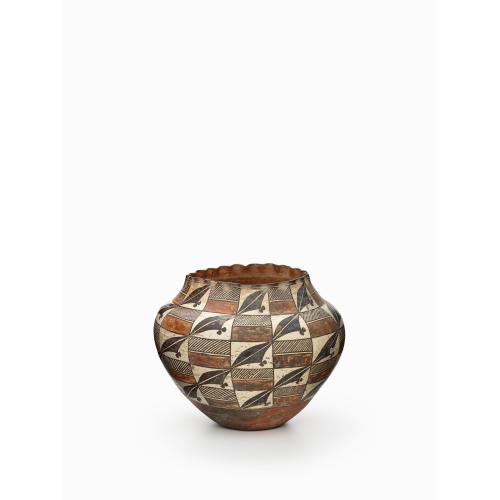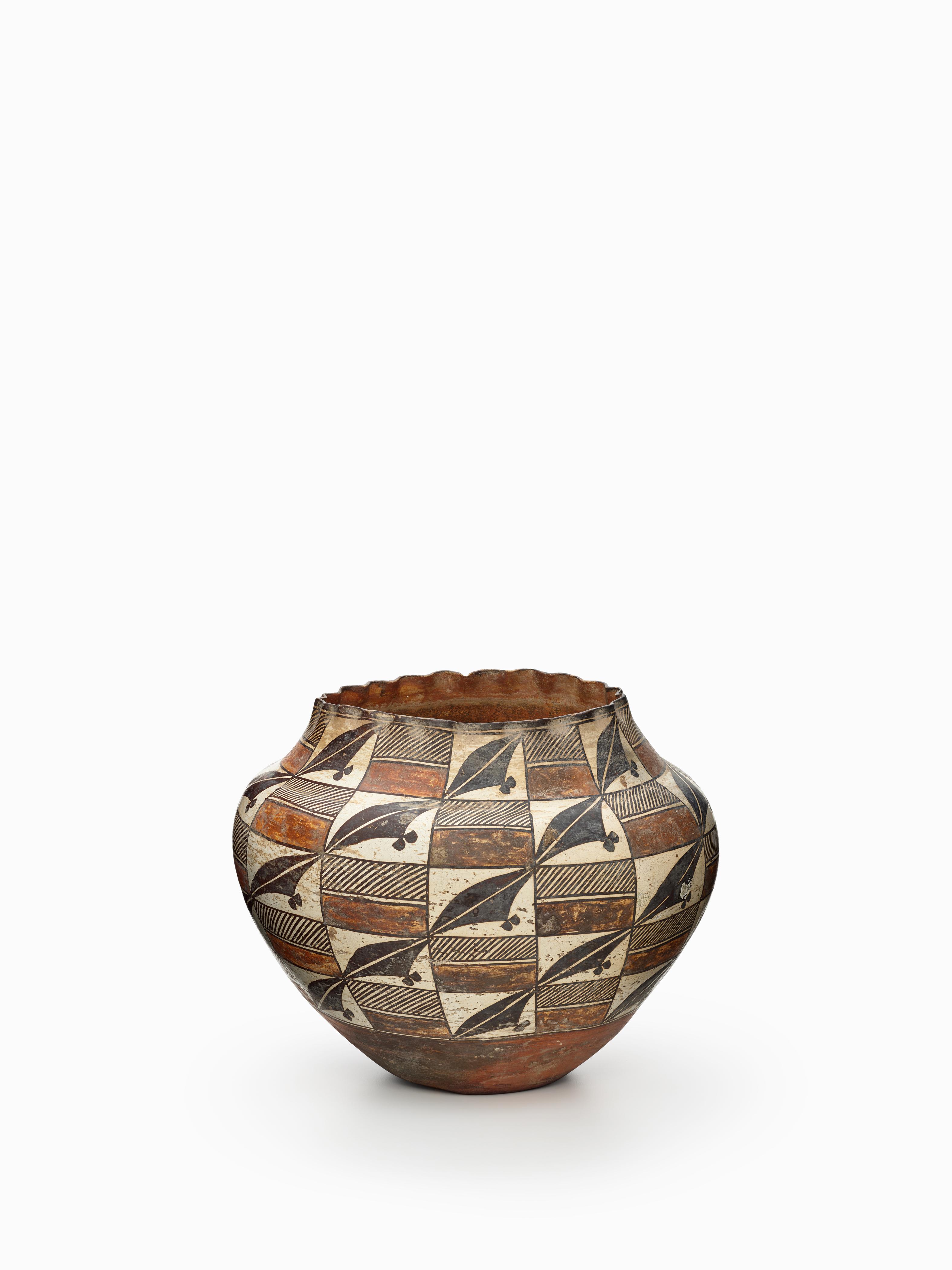
Photograph by Peter Gabriel Studio. Copyright 2020-2021 Peter Gabriel Studio.
Water jar
Date: 1890-1915
Artist or Maker: Unknown
Dimensions:
Dimensions: H: 27.9 × Dia: 35.6 cm (H: 11 × Dia: 14 in.)
Weight: 2.3 kg (5.15 lb.)
Medium: clay | paints
Credit Line: Indian Arts Fund purchase for the permanent collection, 1931.
Place Made:
Valencia County, New Mexico, Southwest, United States, North America
Object Number: IAF.1591
On view
at The Vilcek Foundation, New York, NY
Tribal Collection Review RemarksAccording to the participants in the Acoma collection review visit May 22-24, 2018 (Events Record “Collection Review: Acoma Pueblo Review 11”: The rim on this jar is fluted. This is achieved by pressing the rim with the thumb and fingers (the thumb positioned between the index and middle finger) while the clay is still soft. This design is a very typical Acoma design of five bands of alternating cloud motifs and rain and sun pattern creating an allover checkerboard pattern. There is one line within the design that was erased but is still visible. This can happened if the area where the design was erased was not re-slipped before the new application of slip. This jar was fired outdoors which is evident in burn marks on the base and the discoloration of the orange slip.
According to the participants in the Acoma collection review visit February 26-27, 2019 (Events Record “Collection Review: Acoma Pueblo Review 12”): The shape of a water jar is characterized by usually having a concave base (can also have a flat base) leading to a wider body and shoulder area. The shoulder, which is typically rounded but can also be sharp, leads inward and up to the neck and opening of the water jar. Historic water jars will sometimes have an indentation from the base the pot was built on (also known as a puki).
Water jars of all sizes are made and used. Medium to small size water jars are more commonly used to carry water as the weight of a filled water jar can become quite heavy. Large sized water jars would be used for storing water. Today at Acoma, water jars are still being used and made in both traditional natural and commercial materials.
In Collection(s)
Bibliography:
The Indian Arts Research Center, in collaboration with Native American community scholars, strives to present accurate collections records. Records may be updated as new information becomes available and is reviewed with the Native American community having cultural affinity to particular items. Please write to iarc@sarsf.org if you have questions or concerns related to the documentation.



